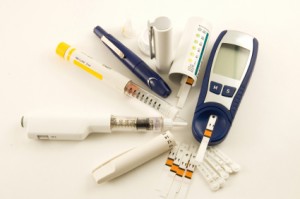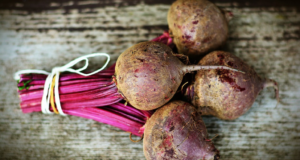“A land of wheat, and barley, and vines, and fig trees, and pomegranates; a land of oil olive, and honey…” Deuteronomy 8:8
 Diabetes is one of the most prevalent diseases in the world. Whether it comes in the form of Type I or Type II, it affects in excess of 25.8 million adults and children, and that is in the United States alone. Diabetes can cause many people to suffer from bouts of hyperglycemia (high blood sugar) or hypoglycemia (low blood sugar), and while diabetes “can” be lethal, the good news is that it is quite manageable.
Diabetes is one of the most prevalent diseases in the world. Whether it comes in the form of Type I or Type II, it affects in excess of 25.8 million adults and children, and that is in the United States alone. Diabetes can cause many people to suffer from bouts of hyperglycemia (high blood sugar) or hypoglycemia (low blood sugar), and while diabetes “can” be lethal, the good news is that it is quite manageable.
There is good news and even better news if you live off the grid. If you have been diagnosed with diabetes, there will never be a better time in your life to grow your own food. The disease may never go away, but you have the resources at hand to keep it at bay. Understand that this article is in no way a replacement or substitute for sound medical care. Neither are we suggesting that insulin-dependent diabetics can simply forego insulin injections or pills. This article is simply suggesting additional ways to manage your diabetes symptoms.
But let us start with the basics. What is diabetes? Simply put, diabetes is a condition where the body is unable to regulate the levels of glucose or sugar in the blood. Glucose is the energy we need, and comes from all the food we eat and the liquids we drink. It is not the same as the sugar you might have put on your cereal as a kid or in your tea (for those who fancy that staple of the South). The body regulates and makes use of glucose through a hormone called insulin, which is produced in the pancreas. When the body does not produce enough insulin, it cannot properly store or use the excess glucose as it normally would.
So, you may ask, what it is you can do about it. How can you, living off the grid and without access to modern medicines and treatments, hope to do as well as the person in the city who has all of those safeguards and modern amenities? The truth is, you can potentially do “better” than the city dweller with everything seemingly at his fingertips. Soft city life leaves many people terribly dependent upon products and services that they can get from their doctor or the local supermarket/pharmacy, etc. Yet you are independent and willing and able to do what needs to be done. With God’s grace, you will succeed, and here’s how.
Grow Your Own Fruit And Vegetables
A healthy and balanced diet is, first and foremost, the best way to maintain your blood sugar. Depending on the season, and what you have elected to grow (based on choice and location), you might have access to a wide array of fruits. Apples, oranges, bananas, grapefruit, cucumbers, tomatoes, melons, carrots, squash – these are all excellent sources of various vitamins and minerals that your body needs to run efficiently and smoothly.
Tips: Living off the land also means you will be more physically active. You must do more to have more. A sedentary lifestyle is one of the quickest ways to put yourself at risk; going hand-in-hand with this is getting enough sleep. Seven to eight hours a night is optimal.
In addition, smoking cessation and stress relieving exercises, like meditation, yoga and tai chi, can go a long way toward improving not just your physical health. All the above work by keeping your blood sugar level; they can also improve your mental and emotional states as well.
Okay, But if I Really Like Snacks?
Now you know what you can do to alleviate the symptoms of diabetes, but what can you eat? A full and balanced meal is all well and good, but what about during the in-between times? Healthy snacks are a marvelous way to keep up your energy and keep any sudden spikes or dips in glucose levels evened out. Here are a few healthy and tasty ideas for snacks during the course of the day.
A handful of nuts – unsalted (of course, you don’t need to trade diabetes for hypertension), like almonds, walnuts, pecans, peanuts and cashews contain the sort of fats (monosaturated) that help to keep your cholesterol down and those hunger pangs at bay. Best of all, because they’re full of “good” fat, you won’t have to worry about them bringing your blood sugar up the way crackers and pretzels do.
Raw Veggies – after cleaning your favorite veggies, fresh from the garden, make a tasty snack of grapes, tomato slices, carrots, red or green peppers, broccoli crowns or cauliflower. If you have access to nonfat yogurt, this makes a fantastic dip, too.
Vegetable Soup – naturally, we are not talking about anything from a can. Despite being filled with some goodness, the sodium (thanks to an over-abundance of salt) and high fructose corn syrup won’t do your blood glucose any favors. No, you want homemade and healthy vegetable soup. Be sure to use non-starchy veggies like spinach, onion, celery, green beans and squash. Vegetable or chicken stock makes a great base.
Sweets – we are not talking about cake or candies here. No. But neither are we willing to let you forgo your sweet tooth. Dried apricots (in moderation – too much can raise your blood glucose) and, if you can get it (from a co-op market or the like), a small square of organic dark chocolate makes a wonderful snack. Depending on the climate you live in, you can grow your own chocolate.
Now that we’ve discussed what you can do about it, what are the dangers and complications that diabetes can cause? Sure, you know about high and low blood sugar, but what happens to the body? Let’s start with hypoglycemia first.
Hypoglycemia: This is a condition where your blood sugar levels are lower than normal. As blood glucose levels drop, glucagon (also made by the pancreas, like insulin), tells the liver to break down glycogen stored in the body in order to create more glucose. In people with diabetes, the production of glucagon is lessened or stopped, so the body fails to regulate the glucose levels properly. Most of the time, symptoms are mild, and can be ‘fixed’ temporarily by eating or drinking something rich in glucose. However, if you do not treat it, it can lead to dizziness, confusion, clumsiness, a coma or even death.
Diabetic Retinopathy: This is a condition that, due to excess glucose in the blood, can cause vision problems and even blindness if left untreated. Two problems of which you should be aware are glaucoma and cataracts. The former is where pressure builds up in the eye, eventually destroying or disconnecting the optic nerve. In the latter issue, a filmy substance forms over the lens of the eye. Thankfully, both of these are preventable. With glaucoma, prevention (the best cure), can be done by keeping tabs on your glucose levels, staying active and eating right. In the case of cataracts, these can be surgically removed, helping to restore your sight. Unfortunately, there is no way to do this yourself, so seeing an eye care professional would be the best option.
Diabetic Neuropathy: This is a condition that typically affects those who have lived with diabetes in excess of 20-25 years. As ever, keeping tabs on your glucose levels and practicing a safe, active, common sense approach to maintaining your health is the best way to alleviate this problem, or to delay its onset. When it arises, (which can be most anywhere, from the arms, legs, hands, feet, groin or in the organ systems of the body) it can cause sensations of numbness, tingling, pain or perhaps even nothing at all. Even if you don’t notice anything, it is not a reason to slack off simply because you think nothing is wrong.
Diabetes is an unfortunate disease, but it is entirely manageable. That management may become more detailed or cumbersome as the years progress, but never is it impossible. With foresight and care, you can live a long, happy life with this not-so-dreaded illness.
 Off The Grid News Better Ideas For Off The Grid Living
Off The Grid News Better Ideas For Off The Grid Living




